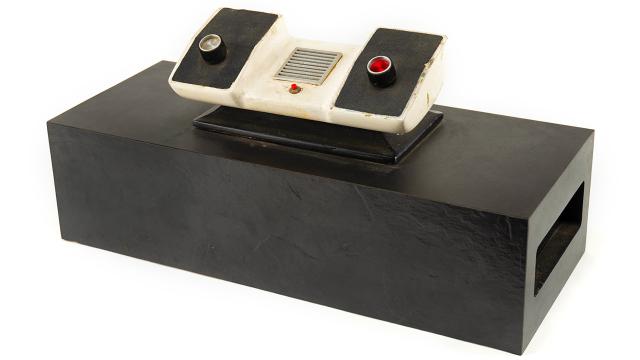Every piece of electronics goes through countless iterative prototypes before finding their way into consumers’ hands, but those prototypes are rarely seen by the general public. That’s what makes this prototype of an Atari Pong console so interesting; only two were ever created, and in a time before rapid prototyping was a thing, the hardware mockup was carved by hand.
For those only weened on mobile games and micro-transactions, Pong is considered the first video game that made video games a thing. It arrived when arcades were strictly full of pinball machines, and despite its simplistic graphics (by today’s standards) its addictive gameplay made Pong arcade machines quarter magnets, and Atari a lot of money. But Pong is also notable because it was the first video game turned into a compact console that consumers could enjoy at home whenever they wanted. It was bad news for arcade owners, but the start of what is now a multi-billion dollar industry.
According to Allan Alcorn, the creator of Pong (and the man who famously gave Steve Jobs his first job at Atari), the biggest challenge of miniaturizing Pong to fit into a device small enough to live on a coffee table wasn’t designing a chip to replace the wired PCBs inside the arcade version, but creating the console’s consumer-friendly plastic housing. In a letter of provenance written and signed by Alcorn included with the prototype, he detailed the real challenge of bringing Pong into the home:
In 1975 Atari had managed to become dominant in the coin operated entertainment business and moved on to build video games for the home market. We had to get Pong running on a single chip of silicon so a product could be built at a price a consumer could afford. I had never designed a custom chip before but I had an engineer, Harold Lee, with me who did have the experience and we managed to get the chip to work. I mistakenly thought that designing the chip would be the hardest part of the project but to my surprise the plastic case wound up taking longer and costing more money than the chip. We eventually did get the plastic to finished but in order to demonstrate the product to potential customers like Sears we had to demo it with a handmade wooden mockup of what the finish case would look like. The wooden mockup was attached to a box that had the electronics in the base and did look and function pretty much like the finished Pong game.
Only two prototypes of the Pong home console were created to allow Atari execs to demonstrate the hardware to potential buyers. (Sears was actually the first to release a home version of Pong in 1975, followed by Atari’s own Model C-100 a year later.) One version featured a prototype of the custom chip Atari designed hidden inside a wooden box underneath the prototype and now resides in the collection of the Computer History Museum, while the second, featuring a production-ready Pong chip hidden in a similar box, was just sold by Alcorn through Boston’s RR Auction house for $US270,910 ($376,077).
There are no details on who actually won the auction, but hopefully, as with the other prototype, it ends up someplace where retro gaming enthusiasts can gaze upon its greatness and ponder its importance as the catalyst of the lucrative console market we know today. (And then afterwards go line up for six hours in hopes of finally snagging a PS5.)
